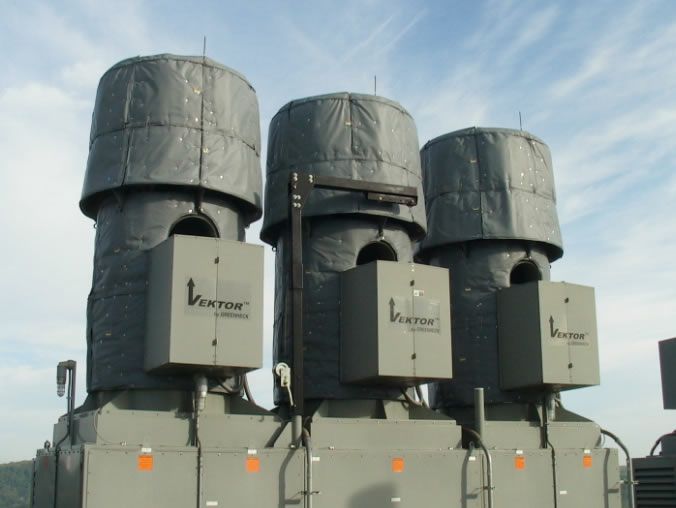12 Smart Solutions to Common “Facilities and Plant Management” Problems
Facility management is entering a new era defined by data-driven decision-making, real-time responsiveness, and predictive insights. Facilities and plant managers carry enormous responsibility—from operational efficiency to regulatory compliance and environmental stewardship. Common problems and best solutions: Here are 12 persistent issues that often plague industrial and commercial facilities, along with smart, actionable solutions to tackle each one head-on.
Best Practices for THESE Facilities Challenges
1. High Energy Costs
In many plants, high energy expenses can eat into the operating budget, but targeted insulation upgrades offer dramatic savings. By applying high-performance insulation materials to steam and hot process components, tanks, valves, flanges, heat exchangers and economizers, managers can capture waste heat and reduce boiler loads. Conducting regular insulation audits reveals gaps and inefficiencies and guides the installation of heat recovery systems. Over time, these improvements deliver measurable ROI and free up capital for other critical projects.

2. Safety Hazards – High Surface Temperatures
Exposed hot surfaces pose burn risks that can lead to costly incidents and downtime. Removable thermal blankets and custom-designed insulation covers create a protective barrier that can keep surface temperatures within OSHA limits. This enhances worker safety without sacrificing process performance.
3. Maintenance Challenges – Hard Jacketing Insulation Removal
Traditional fixed insulation often complicates routine maintenance tasks, forcing crews to cut away and later rebuild hard insulation jackets(or very often left bare), which wastes time and resources. Flexible Reusable insulation blankets solve this by having integral fasteners, so technicians can access equipment swiftly and re-secure covers in minutes. A sequential tagging system and standardized installation guides further streamlines turnover between operations and maintenance teams. The result is less cost, less downtime and more predictable maintenance cycles.

4. Sustainability Goals
Facilities striving for greener operations must consider the low-hanging fruit of energy efficiency through the Insulation of THINGS. Components left bare create a large amount of heat loss in systems. Reusable Insulation Blankets optimize thermal efficiency. Lifecycle assessments help managers quantify environmental benefits and support green facilities goals. Used with comprehensive energy management strategies, plants move closer to net-zero targets.
5. Lack of Specificity in Insulation Design
Off-the-shelf or fabricated-on-site insulation products often fail to address unique process conditions, leading to underperformance or premature failure. Collaborating with specialists to perform thermal energy analysis ensures the right material, thickness, and jacketing are selected for each application. Engineered designs consider factors like vibration, chemical exposure, and operating temperature cycles, resulting in reliable, optimized insulation assemblies. This specificity in design curbs energy waste, extends equipment life and provides long service life of insulation assets.
6. Limited Awareness of Insulation Benefits
Plant Supervisors sometimes underestimate the impact of comprehensive insulation on energy savings, safety, and maintenance. Hosting hands-on demonstrations and sharing internal case studies helps communicate real-world performance and payback timelines to multiple stakeholders. Tracking energy usage before and after insulation projects turn abstract benefits into compelling data. Engaging decision-makers with clear financial models cultivates support for ambitious insulation programs.
7. Complex Installation Issues
Intricate piping networks, irregular equipment geometries, and need for equipment access can complicate insulation installation. Hard Insulation or metal or plastic jacketing is not suited for these complex systems and installation requires large amounts of downtime. These time consuming onsite installations will be forcibly removed and destroyed when access is needed to maintain maintenance operations. Flexible and reusable insulation blankets provide optimal performance and can be removed and reinstalled easily.

8. Loud Equipment
Excessive noise from compressors, pumps, and fans not only impacts OSHA safety compliance but also degrades worker morale. Acoustic insulation blankets and shields reduce sound levels. Regular predictive maintenance reduces mechanical wear, lowering noise at its source. Together, these measures create a safer, more comfortable environment for personnel.
9. Washdown Affects Sensitive Indoor Equipment
Facilities that perform regular washdowns, such as food and beverage plants, face moisture and chemical intrusion onto sensitive equipment. Often plastic sheeting and tape is used to shield insulation from frequent hosing. Rain Shield Protective Enclosures are a better solution. Properly designed protective shields maintain integrity even under harsh washdown routines. These designed-to-fit shields are reusable, with a long service life that aids in sustainability and zero-waste initiatives.
10. Weather Affects Sensitive Outdoor Equipment
Outdoor instrumentation and actuators are vulnerable to UV damage, and moisture from rain & snow. Rain shield protective covers protect sensitive components. Rain Shield customized enclosures mitigate weather issues that affect equipment’s ability to operate reliably outdoors.
11. High Pressure Flange Leak/Spill Mitigation
Flange leaks under high pressure risk both safety and environmental compliance. Safety Spray Insulation blankets with bottom grommet, directs effluent to containment beds. Quick integral fasteners allow fast access for inspection and repair, while corrosion-resistant materials withstand aggressive fluids. Integrating these systems can help prevent incidents from escalating.
12. MOV – Motor Operated Valve Passive Fire Protection
Motor Operated Valves are critical to safety systems but can lose operating ability without proper fire protection. Installing Rapid Rise fire insulation blankets around valve bodies maintains operational integrity during a fire event according to UL1709 Rapid Rise Fire Test Method. Integrating passive fire protection onto valve assemblies enhances overall plant resilience without adding complexity.
Summary
Common Problems and Best Solutions:
By addressing these twelve core challenges with engineered reusable insulation blankets and protective shields, monitoring, and maintenance strategies, facilities can optimize energy use, enhance safety, simplify operations, and meet sustainability targets—all while minimizing overall costs and downtime.
We have the data you need to drive your decisions – Contact Us Shannon Global Energy Solutions, Proven Solutions!

